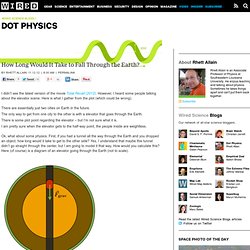

Kepler-10c boosts case for life on other worlds. 'Godzilla of Earths': The newly discovered Kepler-10c dominates the foreground in this artist's conception.

Its sibling, the lava world Kepler-10b, is in the background and both orbit a star like our sun. Photo: Reuters/Centre for Astrophysics Astronomers have discovered a new type of rocky planet dubbed the ‘‘Godzilla of Earths’’ that they say has positive implications for the existence of life and habitable worlds outside our solar system.
The newfound ‘‘mega-Earth’’, Kepler-10c, weighs almost 17 times as much Earth and is located about 560 light-years away in the constellation Draco. The planet is believed to be entirely solid and theorists thought it couldn’t exist because anything so big would attract hydrogen gas as it formed and become a Jupiter-like gas giant. Harvard-Smithsonian Center for Astrophysics announced the discovery of the planet at a American Astronomical Society meeting in Boston. Advertisement ‘‘That’s the surprising bit about this planet. Poster-earth. Although many cartoons suggest that if you dig a deep hole straight down through the Earth, you will end up in China.

The truth is that starting a hole in North America will take you to the Indian Ocean. In order to emerge in China, you would need to start digging in Argentina. Having clarified this technical point, we are still stuck with the figure of speech that digging through the Earth form the U.S will take you to China. The interesting part is that falling from here to the Indian Ocean would take as much time as falling from here to China.
In other words, as long as you are falling though some hole in the earth, it will take the same amount of time to fall. Let’s assume that we have a hole that leads straight through the center of the Earth and is large enough to comfortably accommodate you while flailing your arms. The force of gravity between two masses m and M is In this problem, you are the m and the Earth is M. 6.673x10 -11 a= But what happened to your mass in this equation? X. Travel anywhere in the world in 42 minutes. How Long Would It Take to Fall Through the Earth? I didn’t see the latest version of the movie Total Recall (2012).

However, I heard some people talking about the elevator scene. Here is what I gather from the plot (which could be wrong). There are essentially just two cities on Earth in the future.The only way to get from one city to the other is with a elevator that goes through the Earth.There is some plot point regarding the elevator – but I’m not sure what it is.I am pretty sure when the elevator gets to the half-way point, the people inside are weightless.
Ok, what about some physics. First, if you had a tunnel all the way through the Earth and you dropped an object, how long would it take to get to the other side? If I assume there is no air for this elevator to fall through, then modeling the motion should be quite simple. Modeling the Gravitational Force Here are two options for the gravitational force that won’t work. This says the gravitational force is some constant value. Fine, neither of the above model works. Yeah. Australian Aboriginal astronomy. Australian Aboriginal astronomy is a name given to indigenous Australian culture relating to astronomical subjects — such as the Sun and Moon, the stars, planets, and the Milky Way, and their motions on the sky.

One of the earliest records of indigenous astronomy was made by William Edward Stanbridge, an Englishman who emigrated to Australia in 1841 and befriended the local Boorong people.[1] Some Aboriginal groups use the motions of celestial bodies for calendar purposes. Many attribute religious or mythological meanings to celestial bodies and phenomena. There is a diversity of astronomical traditions in Australia, each with its own particular expression of cosmology. However, there appear to be common themes and systems between the groups.
Star Size Comparison HD. Watch Are We Alone in the Universe? Online. Weather. Solar System, Solar System Information, Facts, News, Photos. Our Cosmic Neighborhood From our small world we have gazed upon the cosmic ocean for thousands of years.

Ancient astronomers observed points of light that appeared to move among the stars. They called these objects "planets," meaning wanderers, and named them after Roman deities—Jupiter, king of the gods; Mars, the god of war; Mercury, messenger of the gods; Venus, the goddes of love and beauty, and Saturn, father of Jupiter and god of agriculture. The stargazers also observed comets with sparkling tails, and meteors or shooting stars apparently falling from the sky. Since the invention of the telescope, three more planets have been discovered in our solar system: Uranus (1781), Neptune (1846), and, now downgraded to a dwarf planet, Pluto (1930). The four planets closest to the sun—Mercury, Venus, Earth, and Mars—are called the terrestrial planets because they have solid rocky surfaces. Nearly every planet—and some of the moons—has an atmosphere.
Formation of coal, petroleum and natural gas. ABC - Science - Beasts - Fossil Fun. Australia life on the edge.